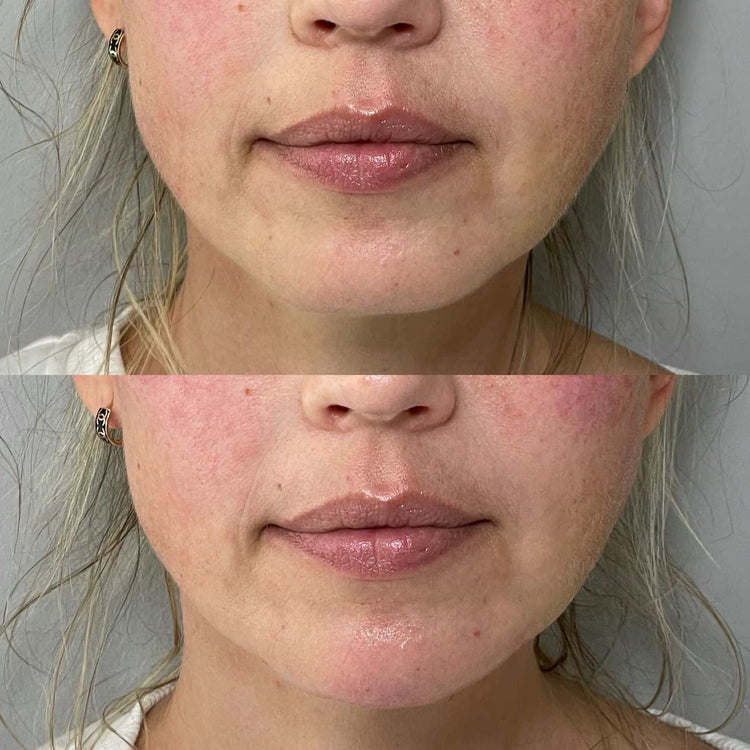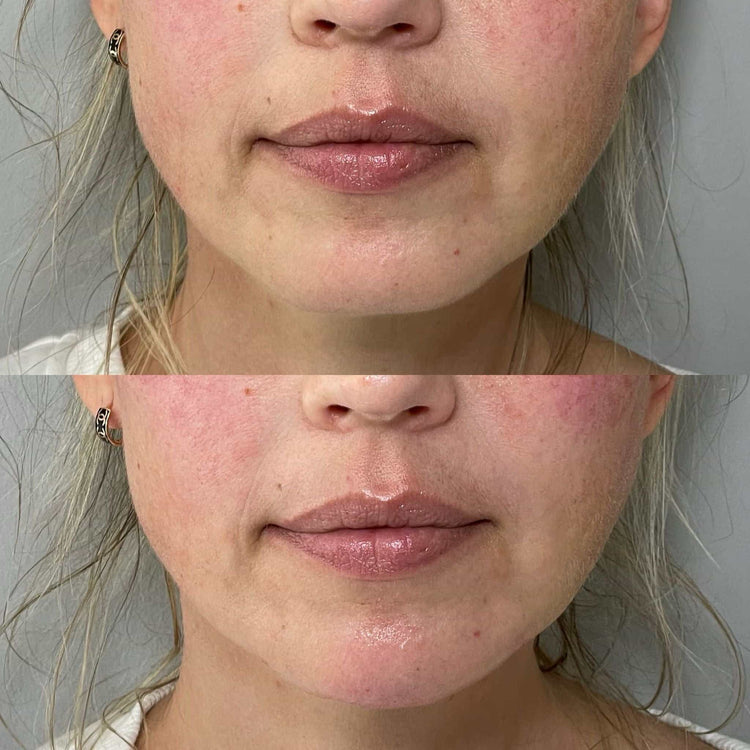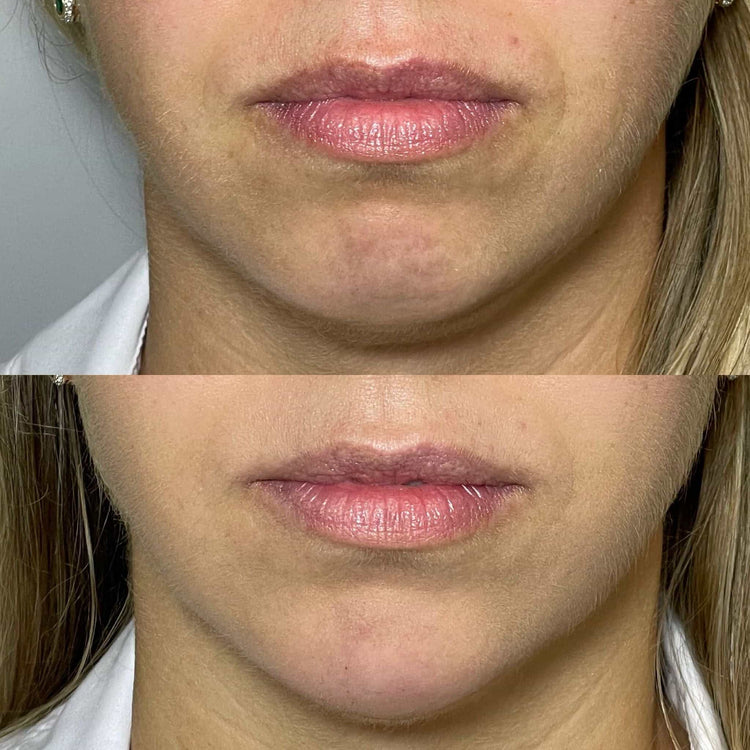Methods for Reversing Labiomental Crease Filler
Labial creases, those vertical folds that appear between the lip and chin, are often addressed with dermal filler injections to smooth out the appearance. While these treatments offer a noticeable improvement, the possibility of reversing them may arise due to various reasons. Understanding the methods available for reversing labiomental crease fillers is crucial for anyone considering this aesthetic procedure.
Dissolving the Filler

Labiomental crease fillers can be reversed through enzymatic dissolution or hyaluronidase injections. Hyaluronidase is an enzyme that breaks down hyaluronic acid, the common component of many dermal fillers used in this area. A healthcare professional will inject hyaluronidase directly into the filler site, causing it to dissolve gradually over a few days.
It’s important to note that enzymatic dissolution may not completely remove all traces of the filler and results vary depending on the type of filler used, the amount injected, and individual patient responses.
Consultation with a qualified medical practitioner is essential for determining the best approach for reversing labiomental crease fillers.
Wait-and-See Approach
Labiomental crease fillers can be reversed through enzymatic dissolution or hyaluronidase injections. Hyaluronidase is an enzyme that breaks down hyaluronic acid, the common component of many dermal fillers used in this area.
A healthcare professional will inject hyaluronidase directly into the filler site, causing it to dissolve gradually over a few days.
It’s important to note that enzymatic dissolution may not completely remove all traces of the filler and results vary depending on the type of filler used, the amount injected, and individual patient responses.
- The Wait-and-See Approach: This method involves monitoring the filler over time to see if it naturally diminishes or disperses within the body.
- Dissolution with Hyaluronidase: As mentioned previously, hyaluronidase is injected to break down the hyaluronic acid in the filler.
Consultation with a qualified medical practitioner is essential for determining the best approach for reversing labiomental crease fillers.
Surgical Removal
Labiomental crease fillers can be reversed through enzymatic dissolution or hyaluronidase injections. Hyaluronidase is an enzyme that breaks down hyaluronic acid, the common component of many dermal fillers used in this area.
A healthcare professional will inject hyaluronidase directly into the filler site, causing it to dissolve gradually over a few days.
It’s important to note that enzymatic dissolution may not completely remove all traces of the filler and results vary depending on the type of filler used, the amount injected, and individual patient responses.
- The Wait-and-See Approach: This method involves monitoring the filler over time to see if it naturally diminishes or disperses within the body.
- Dissolution with Hyaluronidase: As mentioned previously, hyaluronidase is injected to break down the hyaluronic acid in the filler.
Factors Affecting Reversibility
The reversibility of labiomental crease fillers depends on a multitude of factors. The type of filler used, the amount injected, and individual patient responses all play a role in determining how effectively a filler can be reversed. Understanding these influencing factors is essential for patients considering this cosmetic procedure.
Type of Filler Used
The reversibility of labiomental crease fillers depends on a multitude of factors. The type of filler used plays a crucial role, as some fillers are more easily reversible than others. Hyaluronic acid-based fillers, which are commonly used in this area, can be dissolved with hyaluronidase, an enzyme that breaks down hyaluronic acid.
The amount injected also influences reversibility. Larger injections may require multiple hyaluronidase treatments or may not be fully reversible. Individual patient responses vary; some individuals metabolize fillers faster than others.
Amount of Filler Injected
The reversibility of labiomental crease fillers depends on a multitude of factors. The type of filler used plays a crucial role, as some fillers are more easily reversible than others. Hyaluronic acid-based fillers, which are commonly used in this area, can be dissolved with hyaluronidase, an enzyme that breaks down hyaluronic acid.
The amount injected also influences reversibility. Larger injections may require multiple hyaluronidase treatments or may not be fully reversible. Individual patient responses vary; some individuals metabolize fillers faster than others.
Duration Since Injection
The duration since injection is a crucial factor influencing the reversibility of labiomental crease fillers. Immediately after injection, the filler is most concentrated and therefore more readily reversible with hyaluronidase. As time passes, the filler disperses and integrates into surrounding tissue, making it progressively harder to dissolve completely.
Generally, fillers are more easily reversed within the first few weeks after injection. Beyond this timeframe, achieving complete reversal becomes increasingly difficult, though partial reduction may still be possible.
Potential Complications
While labiomental crease fillers can effectively smooth out facial wrinkles and enhance appearance, understanding potential complications is crucial for informed decision-making. Factors such as filler type, injection amount, and individual patient response all influence the reversibility of these treatments.

Infection
Infection is a potential complication associated with any medical procedure that involves injections.
Like all injectable procedures, labiomental crease filler injections carry a risk of infection if proper sterile techniques are not followed.
Allergic Reaction
Allergic reactions to dermal fillers are possible, although relatively rare.
Symptoms can range from mild itching or redness to more severe reactions like swelling, hives, or difficulty breathing. If you experience any signs of an allergic reaction after a filler injection, seek immediate medical attention.
Lumps or Nodules
Labiomental crease fillers can be reversed through enzymatic dissolution or hyaluronidase injections. Hyaluronidase is an enzyme that breaks down hyaluronic acid, the common component of many dermal fillers used in this area. A healthcare professional will inject hyaluronidase directly into the filler site, causing it to dissolve gradually over a few days.

It’s important to note that enzymatic dissolution may not completely remove all traces of the filler and results vary depending on the type of filler used, the amount injected, and individual patient responses.
- Infection is a potential complication associated with any medical procedure that involves injections.
- Allergic reactions to dermal fillers are possible, although relatively rare. Symptoms can range from mild itching or redness to more severe reactions like swelling, hives, or difficulty breathing. If you experience any signs of an allergic reaction after a filler injection, seek immediate medical attention.
Risks and Considerations
Before undergoing any cosmetic procedure, it’s essential to carefully consider the potential risks and benefits involved. Labiomental crease fillers, while offering a non-surgical way to smooth out wrinkles, come with certain considerations that should be thoroughly understood.
Consultation with a Qualified Practitioner
Labiomental crease fillers can be reversed through enzymatic dissolution or hyaluronidase injections. Hyaluronidase is an enzyme that breaks down hyaluronic acid, the common component of many dermal fillers used in this area. A healthcare professional will inject hyaluronidase directly into the filler site, causing it to dissolve gradually over a few days.
It’s important to note that enzymatic dissolution may not completely remove all traces of the filler and results vary depending on the type of filler used, the amount injected, and individual patient responses.
- Infection
- Allergic Reactions
Before undergoing any cosmetic procedure, it’s essential to carefully consider the potential risks and benefits involved. Labiomental crease fillers, while offering a non-surgical way to smooth out wrinkles, come with certain considerations that should be thoroughly understood.
Realistic Expectations
Understanding the risks and considerations associated with labiomental crease fillers is crucial for making informed decisions about this cosmetic procedure. While fillers can effectively reduce the appearance of wrinkles, potential complications should be carefully weighed against the desired outcomes.
- Infection: As with any injection-based procedure, there’s a risk of infection if proper sterile techniques aren’t followed.
- Allergic Reactions: While rare, allergic reactions to dermal fillers are possible. Symptoms can range from mild itching or redness to more severe responses like swelling, hives, or difficulty breathing. Immediate medical attention is necessary if any signs of an allergic reaction occur.
Realistic expectations about the reversibility of labiomental crease fillers are essential. While they can be partially or fully reversed through enzymatic dissolution using hyaluronidase, several factors influence the success and completeness of this process. The type of filler used, the amount injected, and individual patient responses all play a role in determining the outcome.
It’s important to remember that complete reversal may not always be possible, particularly if a significant amount of filler was used or if time has passed since the initial injection.
- The Spoon – Best Anal Sex Positions - June 17, 2025
- Chin Augmentation With Chin Filler Near Westcott, Surrey - June 17, 2025
- Chin Augmentation With Chin Filler Near Guildford, Surrey - June 15, 2025
